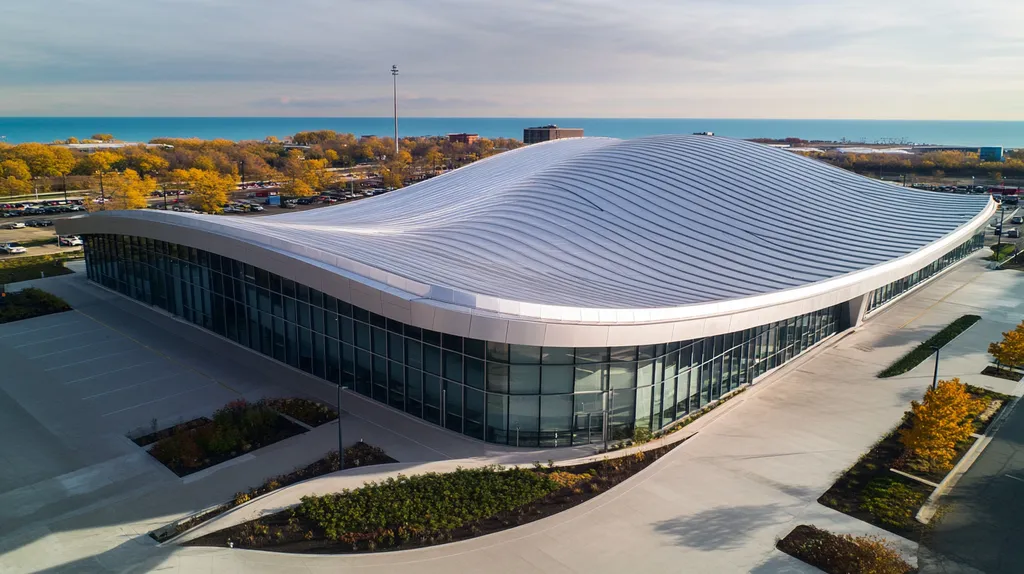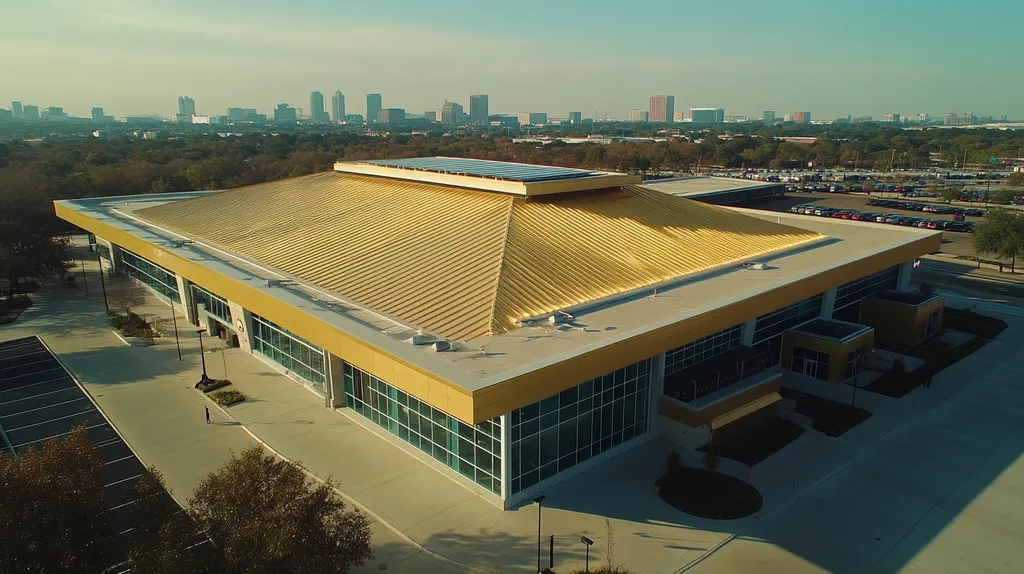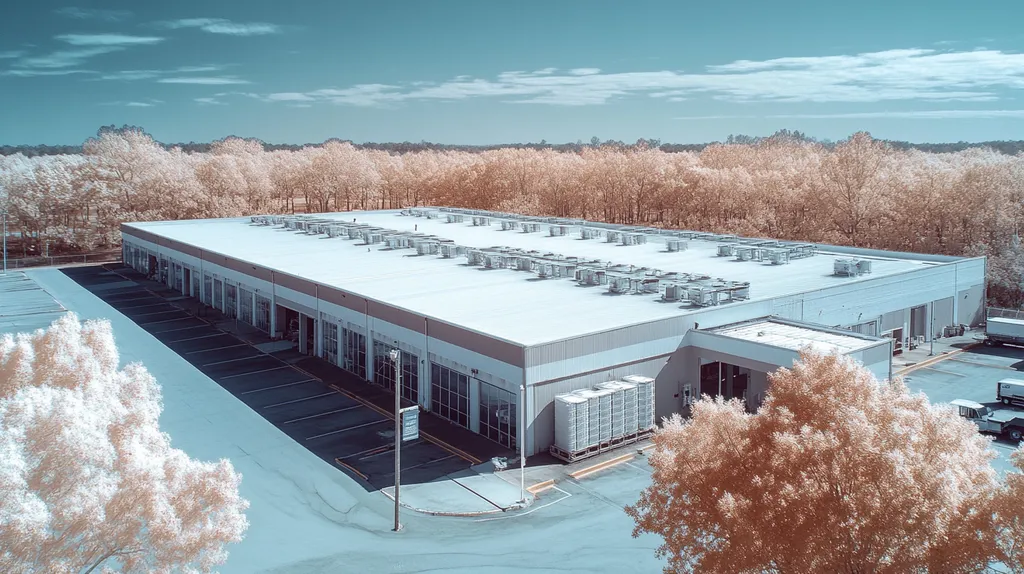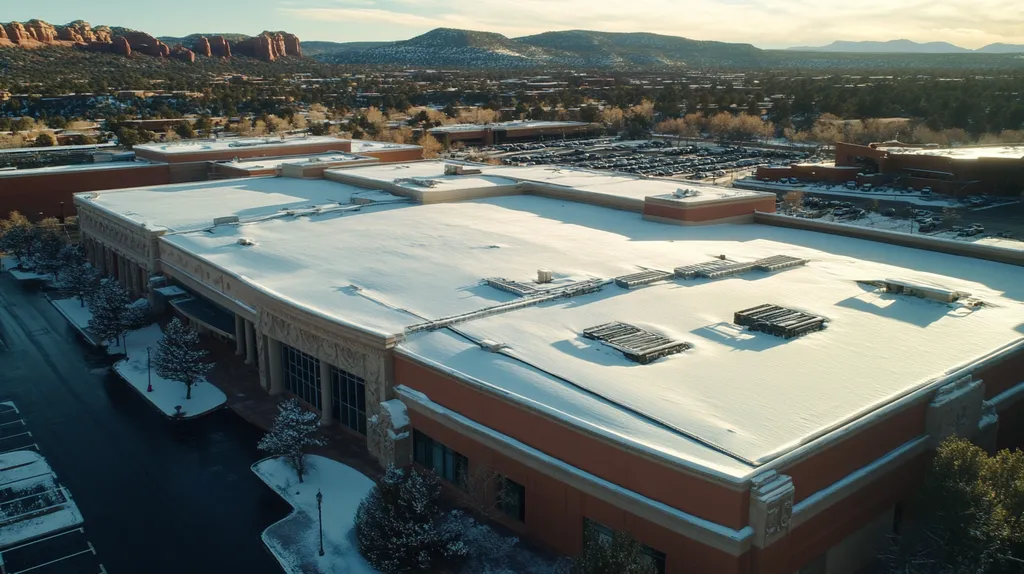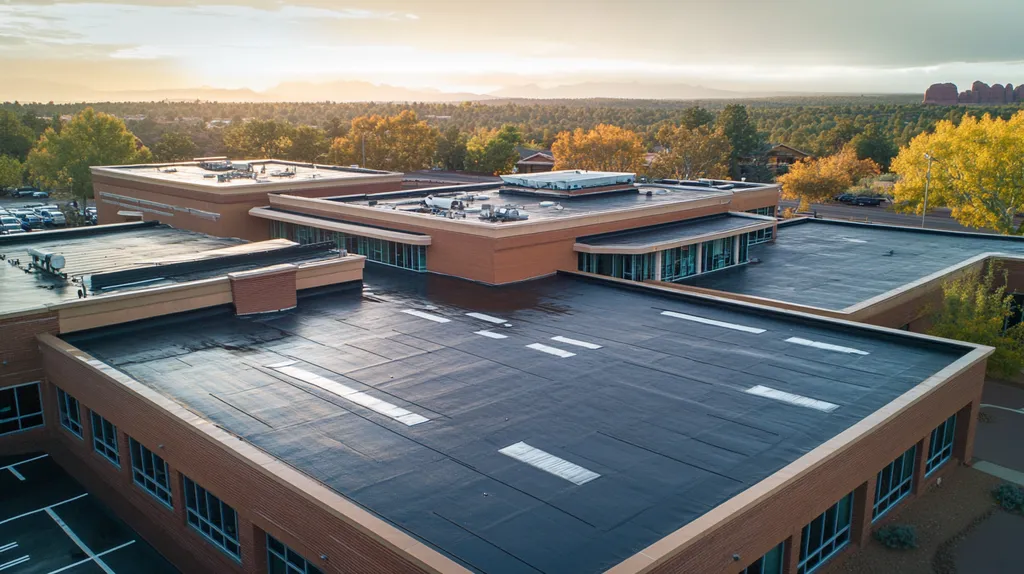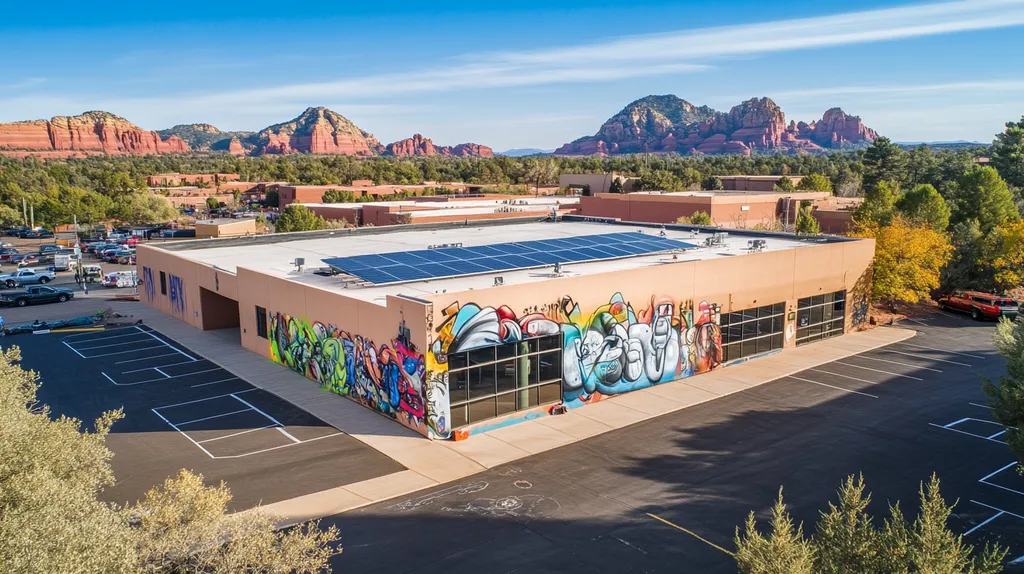Up to 40% of industrial roofs suffer premature deterioration, leading to millions in repair costs and operational disruptions annually. Modern protective coatings can extend roof life by 15-20 years while reducing maintenance expenses by up to 50%.
For facility managers, selecting and implementing the right coating solution represents a critical opportunity to enhance building performance and protect valuable assets. However, navigating the complex landscape of coating technologies, application methods, and maintenance requirements poses significant challenges.
This comprehensive guide examines key factors in coating selection, application best practices, and long-term maintenance strategies that optimize industrial roof durability and performance.
SECTION 1: PERFORMANCE FACTORS
The durability of industrial roofs is a pressing issue for facility managers. Alarmingly, up to 30% of roofs suffer premature failure before reaching their expected lifespan, primarily due to inadequate protective measures. This not only incurs expensive repairs but can also lead to operational disruptions and safety risks. Roof coatings present a proactive solution, enhancing roof longevity and performance. By understanding the critical factors influencing roof coating durability, managers can make smart, informed decisions that positively impact their facility’s finances.
Roof Coating Durability Factors
The durability of roof coatings hinges on multiple factors, such as application methods and environmental conditions. Ensuring thorough surface preparation is vital; contaminants can hinder adhesion and reduce coating effectiveness. Moreover, the thickness of the coating layer correlates directly with durability—thicker applications often yield better protection against wear.
Environmental conditions significantly affect coating durability. Regions with extreme weather patterns—be it heavy rain or intense heat—might necessitate specialized formulations designed to withstand these challenges. Selecting the right type of coating material is equally crucial; for example, silicone coatings are ideal for damp environments but may not hold up in areas with high UV exposure.
Routine maintenance is key to prolonging the life of roof coatings. Facility managers should regularly inspect for signs of wear, such as cracks and blisters, and address these concerns without delay. This proactive maintenance strategy helps preserve the integrity of the roof and extends the coating’s effectiveness.
Key Action Items
Material Resistance to Weathering
Weathering is a significant threat to the lifespan of industrial roofs. Exposure to UV rays, rain, and wind can deteriorate coatings, resulting in early failures. Therefore, selecting materials that can effectively resist weathering is essential for reliable roof protection.
Many modern coatings incorporate special additives that enhance UV resistance, creating a robust barrier against sunlight. This is especially crucial in regions with high levels of UV exposure. Additionally, certain materials are formulated to resist moisture penetration, which helps prevent mold and mildew buildup, reducing associated maintenance challenges.
Investing in high-quality, weather-resistant coatings can drastically cut maintenance costs and the need for frequent repairs. In the long run, choosing durable coatings not only safeguards the roof but also minimizes financial burdens due to operational disruptions. Understanding specific environmental conditions can guide managers in making selections that optimize coating longevity and effectiveness.
Key Action Items
Thermal Shock Protection
Thermal shock poses a considerable threat to the structural integrity of industrial roofs, often resulting in cracks and reduced durability. This phenomenon typically occurs when drastic temperature fluctuations cause rapid expansion and contraction of roofing materials. Thus, it is crucial to choose coatings that provide robust thermal shock protection.
Some coatings are specially engineered to accommodate thermal movements, preventing damage from stress. Flexible elastomeric coatings, for instance, can endure significant temperature variations without compromising their protective qualities. This flexibility not only preserves the coating’s integrity but also safeguards the underlying roofing materials.
Beyond the choice of material, effective application techniques are essential for enhancing thermal shock resistance. Properly applying coatings ensures a consistent layer that minimizes vulnerable points. Regular inspections and maintenance checks further protect the roof from thermal stresses, maintaining its overall performance.
Key Action Items
SECTION 2: FINANCIAL CONSIDERATIONS
As facility managers strive to optimize operational costs, roofing expenses can weigh heavily on budgets. In fact, maintenance and repairs can account for nearly a quarter of a facility’s budget. By investing in roof coatings, facility managers can significantly reduce these costs while extending the lifespan and enhancing the performance of their roofs.
Cost-Benefit Analysis of Coatings
A comprehensive cost-benefit analysis is vital when considering roof coatings. While the initial investment might seem daunting, the return on investment (ROI) can be substantial over time. Coatings help prevent leaks and decrease the need for repairs, ultimately lowering the total lifecycle costs of roofing systems.
Facilities utilizing coatings often see maintenance costs plummet by up to 50%. This statistic underscores the potential for long-term financial savings that can far exceed upfront expenditures.
Additionally, many manufacturers provide warranties ranging from 10 to 20 years, adding to the overall value. Such warranties allow property managers to allocate budgets with greater confidence while reducing risk.
Key Action Items
Energy Efficiency and Cost Savings
Energy efficiency also plays a significant role in budgeting decisions. Roof coatings are designed to reflect sunlight, thereby reducing heat absorption and lowering cooling costs. In fact, reflective coatings can decrease roof surface temperatures by as much as 40 degrees Fahrenheit.
Lower surface temperatures result in decreased energy needs for cooling systems, potentially saving facilities 20% on energy bills. For large industrial facilities, these savings can amount to thousands of dollars in reduced utility costs each year.
Moreover, energy-efficient coatings further sustainability objectives, enhancing the facility’s reputation as an environmentally conscious organization. This can be essential for attracting eco-aware clients and partners.
Key Action Items
Long-Term Repair and Maintenance Costs
Investing in quality roof coatings can greatly diminish long-term repair and maintenance expenses. Roofs lacking protective coatings are more susceptible to environmental wear and tear, including damage from UV rays, rain, and snow.
Neglecting coatings can lead to escalating repair costs; facilities often find themselves facing double the expenses due to continuous cycles of fixes and replacements.
Preventative maintenance costs are generally much lower than emergency repair expenses. With a proper coating applied, facilities can effectively maintain their roofing systems, thereby extending their overall lifespan.
Key Action Items
SECTION 3: COMPLIANCE REQUIREMENTS
Compliance with roof coating regulations is crucial and must be prioritized by facility managers. As environmental concerns gain traction, standards set by governing bodies increasingly dictate the materials and methods used in roofing. Navigating these regulations is vital not only to avoid fines but also to optimize the roof’s performance and longevity, directly enhancing the building’s return on investment.
Regulatory Standards for Roof Coatings
Facility managers need to remain updated on the evolving regulatory framework for roof coatings. Organizations like the Environmental Protection Agency (EPA) establish important guidelines that cover safety and performance metrics. Coatings must adhere to specific reflectivity and volatile organic compound (VOC) limits to mitigate environmental impact.
It’s important to recognize that states may have additional regulations, making it essential to consult local building codes. Failure to comply can result in enforcement actions such as fines and mandated repairs. Staying informed not only ensures adherence to these regulations but also contributes to greater roof durability and functionality.
To combat issues like corrosion and UV damage, facilities should opt for compliant, high-quality coating systems. Complying with these standards can lead to better warranties and increased lifespan for roofs, maximizing both investment and overall performance.
Key Action Items
Environmental Compliance and Sustainability
Environmental compliance is now a vital factor in selecting roof coatings. Choosing products low in VOCs and promoting sustainability can greatly reduce a facility’s ecological footprint. This focus aligns with global trends towards greener building practices and demonstrates a commitment to environmental stewardship.
The utilization of sustainably-sourced materials is increasingly becoming a regulatory norm. Products certified by entities like the U.S. Green Building Council can even help achieve LEED credits, underscoring the need for coatings that support sustainability goals.
Furthermore, using reflective coatings enhances energy efficiency, lowering cooling costs and consumption. Not only does this compliance reflect positively on a company’s finances, but it also elevates the facility’s image as an environmentally responsible organization.
Key Action Items
Industry Certifications and Credentials
Industry certifications are essential in ensuring that the chosen roof coatings meet established performance standards. Certifications from respected organizations, like the Cool Roof Rating Council, provide guarantees about the efficiency and effectiveness of roofing products.
Utilizing certified materials can lead to enhanced longevity and improved roof performance. Facility managers should prioritize coatings that carry these certifications, ensuring they have undergone rigorous testing for compliance with safety and performance standards.
Collaborating with certified installers guarantees that installation is executed according to best practices and regulatory requirements. This proactive approach minimizes potential issues and provides facility managers with assurance regarding their roofing investment.
Key Action Items
SECTION 4: RISK MANAGEMENT
Industrial roofs are crucial assets for any facility, and their failure can lead to significant financial loss and operational disruptions. Alarmingly, nearly 60% of commercial buildings experience leaks at some point due to inadequate roof maintenance. By identifying the risks associated with roofing failures, facility managers can take proactive measures to prevent them. This section outlines common roofing failures, strategies to mitigate leaks and water damage, and methods to prevent mold and mildew growth.
Identifying Common Roofing Failures
Facility managers must first recognize the common failures that threaten the integrity of an industrial roof. Issues such as membrane punctures, seam failures, and surface deterioration frequently arise. For instance, single-ply roofs are particularly vulnerable to blisters and tears that can result from extreme temperature changes.
Lack of regular inspections also poses a significant risk. Roof systems that do not receive routine assessments are susceptible to hidden problems that may escalate unnoticed. By proactively identifying these common issues, facility managers can mitigate risks before they develop into larger, more expensive problems.
In addition, poor installation practices can lead to future leaks and structural concerns. Ensuring quality craftsmanship during installation is essential for the roof’s durability and performance. Environmental factors like heavy snowfall and intense UV exposure can further accelerate wear, making it vital to understand the specific conditions affecting your facility’s roofing.
Key Action Items
Mitigating Leaks and Water Damage
Leaks are one of the most detrimental issues an industrial roof can face, often resulting in water damage and operational downtime. Regular maintenance checks are essential to identify potential leak sources, such as worn flashings or clogged drains. For example, blocked drains can cause standing water, significantly increasing the risk of leaks.
Utilizing high-quality roof coatings can dramatically enhance water resistance. Reflective and waterproof coatings form a barrier that protects against moisture infiltration, extending the roof’s lifespan. Facilities that apply elastomeric coatings often report improved leak protection and energy efficiency.
Sealing exposed seams properly can further minimize leak risks. This practice helps maintain the roof’s waterproof integrity by preventing water from penetrating through vulnerable areas. Routine inspections of seams should be a standard part of the maintenance protocol.
Addressing the rooftop drainage system is also critical. Ensuring that all drains, gutters, and downspouts function correctly and are free of debris helps manage water flow, thus reducing the chances of leaks and subsequent damage.
Key Action Items
Preventing Mold and Mildew Growth
Mold and mildew pose significant health risks and can compromise the roof structure’s integrity. These fungi thrive in damp environments, making effective moisture management essential. Facility managers need to monitor areas prone to water accumulation, as these spots can become breeding grounds for mold.
Employing roof coatings with anti-microbial properties can help deter mold and mildew growth. These specialized coatings create an environment unfavorable for mold spores, making it harder for them to settle and proliferate. Regular reapplication is necessary to maintain their protective benefits.
Ensuring adequate ventilation in roofing systems is another key strategy to reduce humidity levels. Improved airflow minimizes damp conditions that support mold growth. Facility managers should regularly evaluate ventilation systems and make the necessary adjustments.
Lastly, maintaining a clean roof surface is vital for preventing mold. Regular cleaning schedules should focus on removing organic debris, which can harbor mold spores. Emphasizing cleanliness in maintenance programs can effectively avert mold growth and its related issues.
Key Action Items
SECTION 5: OPERATIONAL PROCEDURES
To ensure the longevity of an industrial roof, meticulous operational procedures are essential. A poorly executed coating application can result in costly repairs, or even necessitate premature roof replacement. For example, if the surface isn’t properly prepared, the new coating may start peeling off within just a year. This section highlights critical practices facility managers must follow in inspections, applications, and maintenance to protect their roofing investments.
Pre-Coating Inspection and Preparation
A thorough pre-coating inspection is vital. Facility managers should identify existing issues, like cracks, blisters, or mold, that could undermine the effectiveness of the new coating. For instance, a visibly worn roof may require repairs before applying a fresh coat.
Cleaning the roof surface thoroughly is another critical step. Debris, dirt, and old coatings must be removed to ensure proper adhesion for the new coating. High-pressure washing is typically recommended to eliminate stubborn residue effectively.
Additionally, assessing weather conditions is crucial. Coating application should be avoided during rain or extreme temperatures, as these factors can inhibit proper curing. Scheduling work for mild, dry weather enhances results.
Key Action Items
Coating Application Best Practices
The coating application process is critical to achieving a durable roof. Following the manufacturer’s instructions precisely is essential, as coatings often have specific requirements for thickness and application technique.
Using the right tools is equally important. Equipment specifically designed for coatings, such as sprayers or rollers, ensures an even application. Facility managers may also find it beneficial to apply the coating in sections for improved control.
Timing is crucial—optimal weather conditions enhance performance. Moisture levels should be monitored to ensure proper adhesion and avoid trapping water. Applying multiple thin coats generally promotes better durability than a single thick layer.
Key Action Items
Post-Application Maintenance Strategies
Effective post-application care is crucial for maximizing the roof’s lifespan. Facility managers should set up a regular inspection schedule to check for any signs of wear or damage that require attention. Early detection can save on repair costs in the long run.
Cleansing the roof regularly also helps maintain its integrity. Removing debris and preventing the accumulation of organic materials can prevent mold growth that threatens coating effectiveness.
Implementing a maintenance log to track inspections, repairs, and general upkeep provides valuable insights into the roof’s condition. Finally, educating staff about the importance of maintenance cultivates a culture of care, extending the roof’s lifespan significantly.
Key Action Items
SECTION 5: OPERATIONAL PROCEDURES
For an industrial roof to stand the test of time, meticulous operational procedures are essential. A mishap during the coating application process can lead to exorbitant repair costs or even necessitate a complete roof replacement. For example, inadequate surface preparation may cause the new coating to peel off within just a year. This section outlines the critical practices facility managers must follow in inspection, application, and maintenance to protect their valuable roofing investments.
Pre-Coating Inspection and Preparation
Performing a comprehensive pre-coating inspection is crucial. Facility managers need to spot existing issues like cracks, blisters, or mold that may interfere with the coating’s effectiveness. For instance, a roof displaying visible wear should undergo repair before any new coating is applied.
Cleaning the roof surface is an equally vital step. It is essential to remove dirt, debris, and old coatings to ensure proper adhesion. High-pressure washing is often recommended to effectively eliminate stubborn residue.
Furthermore, assessing weather conditions is essential for successful coating application. Applying coatings should be avoided during rain or extreme temperatures, as these conditions can prevent proper curing. Scheduling the work for mild, dry weather ensures optimal results.
Lastly, organizing all necessary materials and safety equipment before starting the project streamlines the application process, reducing delays and maintaining efficiency.
Key Action Items
Coating Application Best Practices
The coating application process is critical to achieving a durable, long-lasting roof. Facility managers should meticulously follow the manufacturer’s instructions, as coatings often have specific requirements for thickness and application technique.
Using the right tools is equally important. Equipment designed specifically for coatings, such as sprayers or rollers, ensures an even application across the surface. Applying the coating in sections can enhance control and quality during the process.
Timing is essential; applications should be conducted under optimal weather conditions to ensure peak performance. Monitoring moisture levels is crucial to prevent water trapping, which can undermine adhesion. Moreover, applying multiple thin coats generally results in improved durability compared to a single thick layer.
Regular inspections during the application can identify issues early, such as uneven distribution or surface imperfections. Implementing checkpoints helps maintain high standards of quality.
Key Action Items
Post-Application Maintenance Strategies
Post-application care is crucial for maximizing the roof’s lifespan. Facility managers should establish a regular inspection schedule to monitor for signs of wear or damage proactively. Early detection can help mitigate costs associated with repairs.
Regular cleaning of the roof is also essential for maintaining its integrity. Clearing debris and preventing the accumulation of organic materials minimizes the risk of mold growth, which could compromise the coating’s effectiveness.
Additionally, creating a maintenance log can track historical performance and establish maintenance patterns. Documenting inspections, repairs, and maintenance actions offers valuable insights into the roof’s current condition.
Finally, fostering staff education on the importance of maintenance cultivates a culture of care. When every team member understands the value of these strategies, the roof’s lifespan can be significantly extended.
Key Action Items
The Bottom Line
With 40% of industrial roofs experiencing premature deterioration, the importance of protective coatings cannot be overstated. These solutions offer a proven path to extending roof life by 15-20 years while cutting maintenance costs in half.
Modern coating technologies provide facility managers with unprecedented opportunities to enhance building performance through improved durability, energy efficiency, and sustainability.
The key to success lies in following established best practices for selection, application, and maintenance while ensuring compliance with evolving regulations.
By implementing the strategies outlined in this guide, facility managers can transform their roofs from potential liabilities into valuable assets that contribute to operational excellence and financial performance.
The time to act is now – every day without proper coating protection puts your facility at unnecessary risk.
FREQUENTLY ASKED QUESTIONS
Q. How do I ensure my industrial roof coatings last longer?
A. To maximize the lifespan of your coatings, focus on thorough surface preparation and application. Ensure any existing issues, such as cracks or contaminants, are addressed before applying the coating. Regular maintenance and inspections also play a crucial role in detecting early signs of wear, allowing for timely repairs.
Q. What are the financial benefits of a commercial roof coating?
A. Investing in roof coatings can significantly reduce maintenance costs and extend the roof’s overall lifespan. Many facilities see up to a 50% reduction in repairs and improved energy efficiency, which translates to lower utility bills. This long-term ROI outweighs initial coating expenses, making it a smart financial decision.
Q. What regulations should I consider for my commercial roof?
A. You need to be aware of local regulations regarding roof coatings, such as those set by the EPA. Ensure the products comply with safety, reflectivity, and VOC limits. Staying informed about regulatory changes helps avoid fines and enhances your roof’s performance and longevity.
Q. How can I identify risks associated with roofing failures?
A. Common risks include membrane punctures, seams failing, and surface deterioration. Conducting regular inspections helps identify these issues early. Proactively addressing any visible signs of wear will minimize the risk of larger, more costly failures arising from inadequate roof maintenance.
Q. What are best practices for coating application?
A. Follow the manufacturer’s application instructions closely, including thickness and technique. Use the right tools for an even application, and monitor weather conditions to choose optimal times for application. Additionally, consider applying multiple thin coats for greater durability and performance.
Q. How can I prevent mold growth on my industrial roof?
A. To prevent mold, monitor moisture-prone areas and apply anti-microbial roof coatings regularly. Improving ventilation reduces humidity, which helps deter mold growth. Routinely cleaning your roof surface to remove organic debris is essential for maintaining a mold-free environment.
Q. When should I schedule roof inspections?
A. Schedule roof inspections regularly, ideally twice a year, and after major weather events. Regular inspections help identify minor issues before they escalate into significant problems, allowing you to maintain the roof’s integrity and extend its lifespan effectively.

